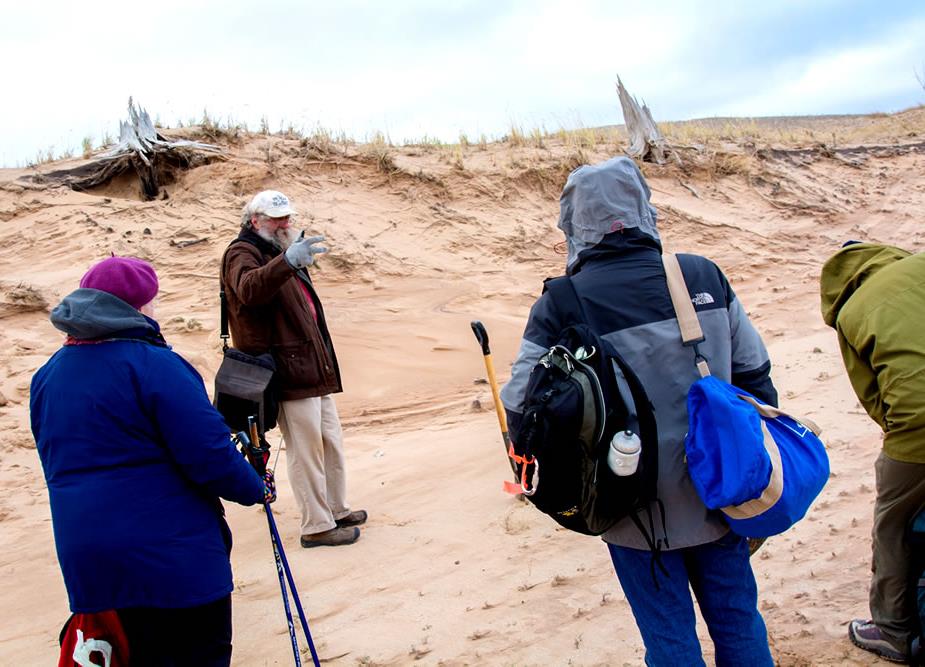
Dr. G. William Monaghan will present results of interdisciplinary research at Sleeping Bear Dunes National Lakeshore at 3:30 p.m. Thursday at the Midwest Archeological Center, Federal Building room 124, 100 Centennial Mall North, Lincoln.
The talk is free and open to the public. No registration is required, but all visitors must have a valid photo ID and pass through a security screening area for entry into the Denney Federal Building. Limited visitor parking is available on the ground floor of the Federal parking garage, at “N” Street and Centennial Mall. Call (402) 437-5392 or email dawn_bringelson@nps.gov with questions.
The research was conducted by Monaghan of the Indiana Geological Survey at Indiana University in Bloomington; William A. Lovis of the anthropology department at Michigan State University; and Alan Arbogast of the geography department at Michigan State University.
Their work examined local human settlement and landscape changes during the late Holocene at 20LU115 on Sleeping Bear Point, Sleeping Bear Dunes National Lakeshore. We will present the specific, local impacts human settlement had on the coastal landscape at Sleeping Bear and compare results with those at Indiana Dune National Lakeshore.
The lecture will describe how dune, water level, and archaeological data collected from the Point fits into a regional pattern of coastal dune activation and stabilization along Lake Michigan. This pattern was recognized based on optically stimulated luminesce (OSL) ages (n=162) compiled from around Lake Michigan.
The researchers identified several episodes of coastal dune construction, each separated by intervals of relative stability, over the past 7000 years ago (ya). However, the presentation focuses on the last three (late Holocene) episodes of dune formation at ~2000, 1000, and 500 ya. The first two of these (2000 and 1000 ya) are separated by the “Holland Paleosol interval,” a remarkable, ~ 400-year period when few dunes were built.
Monaghan will discuss how the pattern of dune formation/stability affects archeological site taphonomy and our ability to reconstruct accurate prehistoric settlement systems in the Great Lakes.
Ultimately, the studies indicate that no single element drives the dune building/stabilization system. Rather, dunes are constructed when a complex set of local environmental conditions within the coastal zone interact with larger-scale climate factors to build (or stabilize) dunes. The data also suggests that the late Holocene, basin-wide episodes of dune construction and stabilization in the Great Lakes are likely driven by much larger, globally-scaled processes. Late Holocene dune cycles around Lake Michigan, including the Holland Paleosol interval, are temporally coincident with coastal dune cycles at Cape Cod and across northern Europe, which suggests that drivers for dunes formation may be hemispherically linked.
The three explored the drivers for late Holocene dune formation by comparing the Great Lakes, Cape Cod, and European dune episodes with long-term records of continental and global climate drivers (i.e., El Niño-Southern Oscillation, Arctic & North Atlantic Oscillations, Pacific/North American Pattern, and Pacific Decadal Oscillation). Comparing these records provides clues as to the factors and condition through which dunes are built, stabilized, and linked hemispherically.
This research is supported by the National Park Service through the Cooperative Ecosystem Studies Unit (CESU).
Submitted